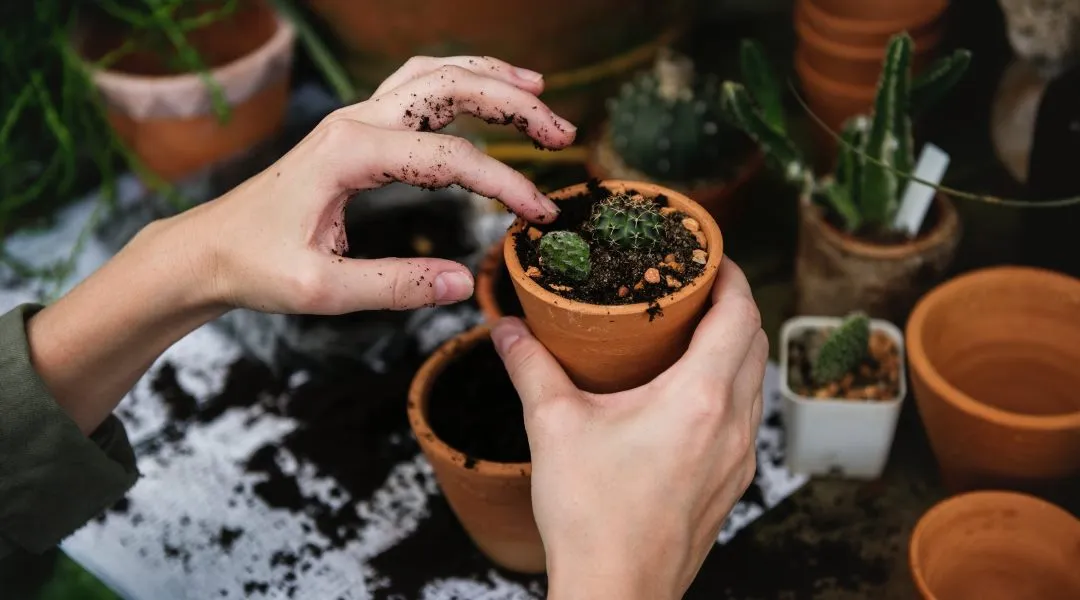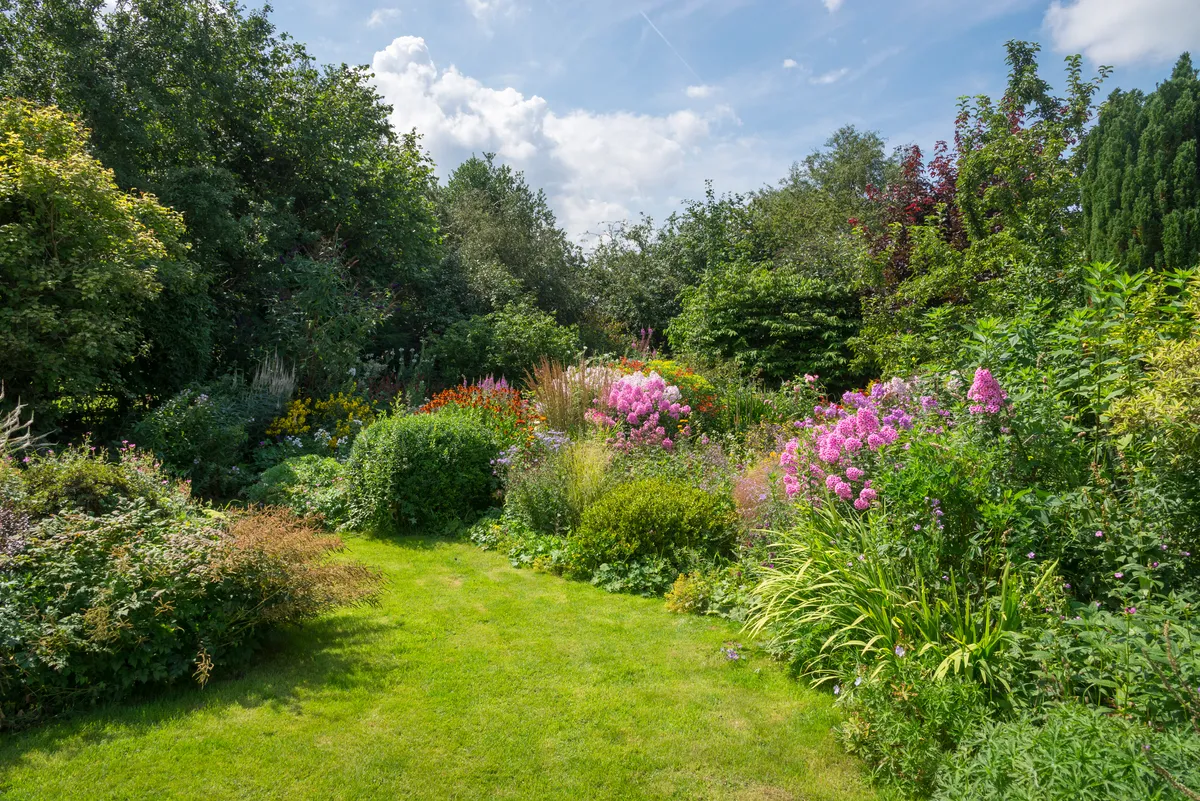Offering fresh air, exercise and - hopefully - a sense of achievement, gardening is a fantastic hobby for people of all ages - and with most Brits confined to their homes, it seems more appealing than ever.
However, getting started can be a bit of a daunting prospect if you've never tried gardening before. Do you have the right soil? What equipment do you need? And what's actually in season right now?
Luckily, some green-fingered gurus are more than happy to share their knowledge with hesitant newbies. Marcus Eyles is the horticulture director for Dobbies Garden Centres and a real gardening expert. We asked him some of the most common questions from beginner gardeners - including the most common pitfalls. Here's his guide to making your garden grow:
What items does a gardener need to get started?
In terms of tools, a hand trowel is a good place to start and it is very important to get one that sits comfortably in your hand as you will be using it regularly. A hand fork is also an important tool alongside a good pair of secateurs, which are great for all the pruning jobs in the garden.
If you want to be prepared all year round, I’d recommend getting a garden fork and spade, making sure they aren’t too heavy to handle.
Don’t forget your watering can, every gardener needs one! I’d recommend one with a detachable fine rose so you don’t drench your young plants. If you don’t want to get your hands dirty, a pair of gardening gloves are a must.
Compost is an important item to have available but be careful as there are many different types to choose from. Liquid fertiliser can also be useful throughout the year to give your flowers that instant boost.
How to get started in the garden if you’re feeling a bit overwhelmed?
If you’ve recently moved into a new home or are starting with a blank canvas, live with the garden for a while and see how the sun works its way around. This allows you to figure out where you will want to spend your time in the garden, decide where seating or play areas will be, and where is best for your plants to thrive. I’d recommend doing one area at a time, otherwise it can be an enormous task for a beginner.
For planting, pick out a south or west facing sunny spot and mark out a border. Where possible, try and make the border a meter deep. If it is alongside a fence then you have an ideal opportunity to grow climbers like Clematis, Sweet Peas or Honeysuckle, which will create a great backdrop of foliage and flower.
Most importantly, enjoy the process – don’t rush! Gardening is a brilliant hobby and great for both physical and mental health, so take your time. Start in a small way, maybe with a container, something bright and cheerful that you can be proud of. You could even do a beautiful floral display or grow your own herbs in a window box in the kitchen.

How to prepare a garden for planting?
To prepare, clear away debris from winter and remove the weeds, leaving you with a blank space to start a fresh. Once clear, you can add compost or other organic matter to prep your beds, before dressing the top with plant food to ensure that your garden thrives – then you’re ready for planting!
What are the best plants for a beginner?
Cottage garden plants are great to have in your garden. They are extremely good value for money and flower every year, attracting plenty of insects. Classic hardy annuals such as Nigella, Centaurea and Calendula can also be sown now and offer long-lasting flowers during the summer months.
Bedding plants like Pansies and Violas are also easy to grow and flourish in the summer months, just be sure to water them regularly. Sunflowers can also be a beautiful way to brighten up the garden and are very easy to grow.
Growing your own produce at home is also very rewarding and brilliant for beginners. A great way to get the children involved is to grow strawberries, which are perfect for their little fingers to pick when they are ripe.
What is in season now?
Begonia is one for the most versatile summer bedding plants and is a must-have for any garden this summer. Happy to grow in either sunning or shady spots, the plant is fantastically vigorous and easy to grow.
Other seasonal bedding plants include pretty pastel Busy Lizzie’s and technicoloured Petunias, both perfect for adding colour to your summer garden.
When it comes to seeds, some of the best to plant now include lettuce, beetroot and peas, all of which will be ready for harvest later in the year. For speedy windowsill crops, go for the likes of mint, basil and coriander and grow in the sunniest spot you have, ensuring fresh and fragrant herbs.

What flowers or plants would you recommend to create a beautiful garden in a limited space?
If you are working with a limited garden space hanging baskets or plant pots are great ways to inject some colour. They can give you that wow factor, with a variety of colours and displays to choose from. Patio roses are a wonderful splash of summer colour into a sunny spot in your garden and can work well for a small space.
If you have a narrow balcony you can get creative with hanging light-weight saddle pots, troughs and planters over balcony railings, or vertical growing systems fixed to the walls.
You also don’t need a large garden for growing your own at home. For small urban gardens, try installing a raised bed. Tailored to fit the size of your garden, you can grow a whole host of vegetables, and with the soil tending to be warmer it means a longer growing season. Grow sacks are also great for patio spaces, with potatoes growing extremely well from them.
The ultimate way to grow your own with now ground space at all has got to be the windowsill. There are a whole host of herbs and vegetables that can be grown on windowsill, with everything from cucumbers to salad leaves to radishes and micro greens. If you have a nice sunny spot, you can even grow tomatoes from your window box, with dwarf varieties and cherry tomatoes perfect for the small space.
Are there any common beginners’ mistakes to watch out for?
Getting the correct compost can be a challenge. Make sure to read up on all the different types of compost out there and figure out which one will suit your garden best.
Over watering is also common mistake. Keep an eye on how much you water your plants – throughout the wetter months you most likely won’t have to pick up the watering can at all, but during summer you might have to water your plants daily.
Don’t let your dead flowers spoil the overall appearance of your garden. Deadheading should be done regularly and is a useful way to remove the dead plant heads (which can be done with your secateurs) to keep the plant looking healthy and allow for new flower heads to blossom.
Also look out for where your plants grow. If plants seed in a certain place in the garden it means they are happy there – so don’t try to re-plant them in a new spot.
Marcus Eyles is the Horticultural Director at Dobbies Garden Centres. Listen to more top tips from Marcus on the Dobbies’ gardening podcast.
